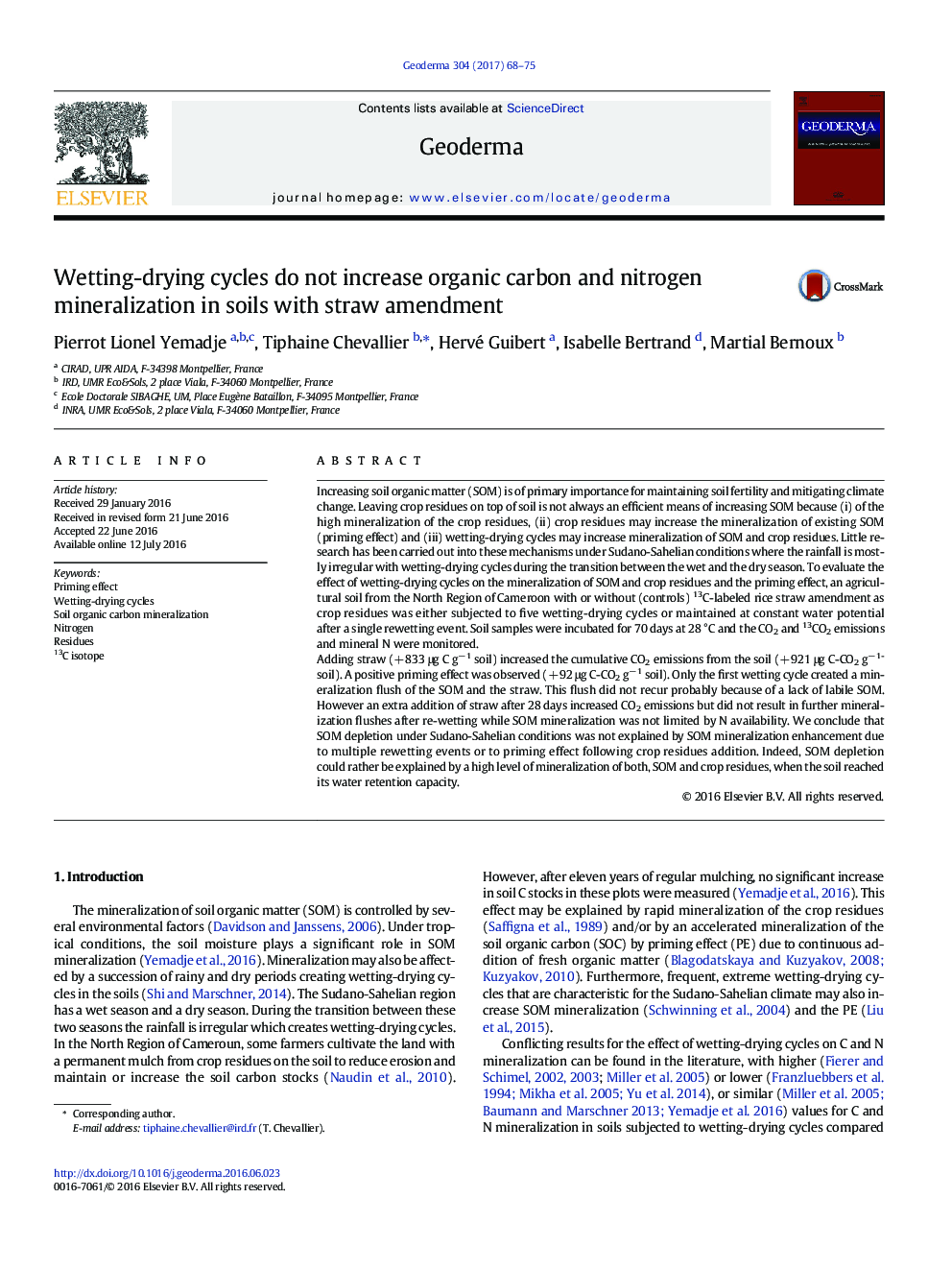| کد مقاله | کد نشریه | سال انتشار | مقاله انگلیسی | نسخه تمام متن |
|---|---|---|---|---|
| 5770337 | 1629413 | 2017 | 8 صفحه PDF | دانلود رایگان |
- Positive priming effect was measured after straw addition on Cameroonian Fluvisol.
- 5 wetting-drying cycles did not impact Soil Organic Carbon or straw mineralization.
- 5 wetting-drying cycles did not impact the priming effect or N mineral dynamic.
- Rice straw was promptly mineralized; only 9% of added straw remains after 70Â days.
Increasing soil organic matter (SOM) is of primary importance for maintaining soil fertility and mitigating climate change. Leaving crop residues on top of soil is not always an efficient means of increasing SOM because (i) of the high mineralization of the crop residues, (ii) crop residues may increase the mineralization of existing SOM (priming effect) and (iii) wetting-drying cycles may increase mineralization of SOM and crop residues. Little research has been carried out into these mechanisms under Sudano-Sahelian conditions where the rainfall is mostly irregular with wetting-drying cycles during the transition between the wet and the dry season. To evaluate the effect of wetting-drying cycles on the mineralization of SOM and crop residues and the priming effect, an agricultural soil from the North Region of Cameroon with or without (controls) 13C-labeled rice straw amendment as crop residues was either subjected to five wetting-drying cycles or maintained at constant water potential after a single rewetting event. Soil samples were incubated for 70 days at 28 °C and the CO2 and 13CO2 emissions and mineral N were monitored.Adding straw (+ 833 μg C gâ 1 soil) increased the cumulative CO2 emissions from the soil (+ 921 μg C-CO2 gâ 1soil). A positive priming effect was observed (+ 92 μg C-CO2 gâ 1 soil). Only the first wetting cycle created a mineralization flush of the SOM and the straw. This flush did not recur probably because of a lack of labile SOM. However an extra addition of straw after 28 days increased CO2 emissions but did not result in further mineralization flushes after re-wetting while SOM mineralization was not limited by N availability. We conclude that SOM depletion under Sudano-Sahelian conditions was not explained by SOM mineralization enhancement due to multiple rewetting events or to priming effect following crop residues addition. Indeed, SOM depletion could rather be explained by a high level of mineralization of both, SOM and crop residues, when the soil reached its water retention capacity.
Journal: Geoderma - Volume 304, 15 October 2017, Pages 68-75
